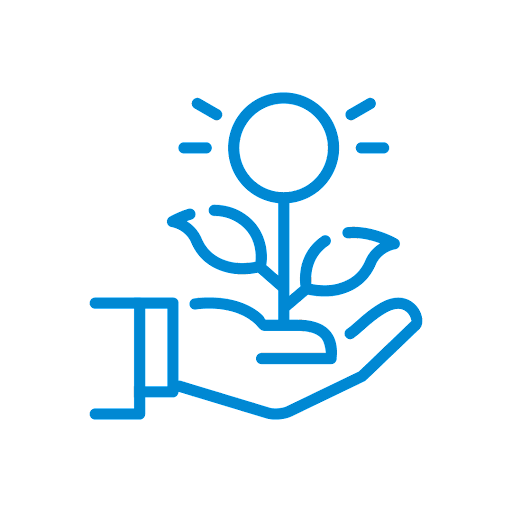As: Global Head, Director, Corporate Social Responsibility (CSR) and Sustainability, EY Global Delivery Services (EY GDS), Rumi Mallick Mitra has decades of experience in leading CSR of organizations like IBM, NASSCOM, etc. Her expertise lies in 'Technology for Good', CSR and people management, working with multicultural teams across functions, equally adept with corporate stakeholders, NGOs and governments
In the latest edition of the CSR Dialogues, Neeti Sharma, Co-Founder and Director of TeamLease EdTech and Ms Rumi Mallick Mitra discussed a host of issues related to how tech adoption has impacted CSR.
![]() The conversation began on the extent to which the Indian social sector has employed tech to varying degrees. Rumi believed that its widespread use has helped those in the CSR fraternity reach more beneficiaries, become more inclusive and assess impact faster, and with more accuracy. Rumi acknowledged that tech adoption got accelerated on account of COVID, and once widely accepted, its impact has been considerable.
The conversation began on the extent to which the Indian social sector has employed tech to varying degrees. Rumi believed that its widespread use has helped those in the CSR fraternity reach more beneficiaries, become more inclusive and assess impact faster, and with more accuracy. Rumi acknowledged that tech adoption got accelerated on account of COVID, and once widely accepted, its impact has been considerable.
She shared her experiences at EY GDS, where tech is continuously deployed in a very significant manner to design, execute, map and measure CSR programs, particularly in education and skills building. Technology has enhanced flexibility for beneficiaries, whereby the digital/hybrid model of curriculum delivery allows learners any-time access, as well as access beyond the metros and even Tier I towns, areas that many NGOs might have struggled to reach with skills development programs. Watch the snippet to know more. And in the case of providing in-depth training in core tech skills, like cloud and data analytics, the hybrid model of skilling fast-tracks learning immensely. And even remotely, tech still enables the learning of life skills since it provides a lot of opportunities to interact online. Tech has enabled EY GDS to scale its skilling modules to benefit thousands more than they could impact earlier. Watch the snippet to know more.
 Rumi highlighted the EY STEM program, EY SkillBridge programs, which has delivered STEM knowledge to over 50,000 girls across India, as well as an employability program for youth, whereby 60% of those impacted are girls. She affirmed that these high numbers have been achieved because the skilling delivery model specifically addressed the unique hurdles Indian girls face in accessing training and employment opportunities.
Rumi highlighted the EY STEM program, EY SkillBridge programs, which has delivered STEM knowledge to over 50,000 girls across India, as well as an employability program for youth, whereby 60% of those impacted are girls. She affirmed that these high numbers have been achieved because the skilling delivery model specifically addressed the unique hurdles Indian girls face in accessing training and employment opportunities.
The discussion moved to addressing the lack of a good digital infrastructure being available uniformly across the country, and even within communities, with girls having less access to tech. Rumi found tech particularly effective in reaching out to girls and women, and emphasized that it is also critical to ‘design for girls’ ., i.e. de learning programs that specifically address and overcome the challenges young girls face in society and within their own families. In order to get good learning outcomes for both genders, CSR programs cannot offer skilling solutions on a ‘one-size-fits-all’ basis. The consensus on this unique challenge boiled down to universal access to skilling should move from laptops to mobiles and from long-commute training centres, to mostly online. Watch to know more.
The other factor Ms Mallick discussed was that since young women needed to work extra hard to convince their families to even participate in skilling programs, it is crucial that the program leads easily to the next phase of their education or employment ; else continued family support is often challenging.
![]() In the light of Rumi diverse two-decade long work in the social sector, Neeti enquired if there was something specific in terms of skilling that had been introduced recently, that made both young women and men a lot more employable than earlier.
In the light of Rumi diverse two-decade long work in the social sector, Neeti enquired if there was something specific in terms of skilling that had been introduced recently, that made both young women and men a lot more employable than earlier.
Rumi did highlight the Government’s Apprenticeship Act and focus on internships, that is gradually improving the pathway for Indian youth to gain meaningful, long-term employment. She also discussed how internships and capstone projects were working well to enhance employability. Discussing EY’s approach to CSR, she revealed that it went beyond mere funding, but involved long term oversight, skills volunteering from EY employees and even a tie-up with AICTE.
EY GDS volunteers are trained on mentoring students pursuing technical courses, on how to ensure they get the most out of their capstone projects. This involves soft skills training, applying their tech know-how in real-world work environments and networking, ensuring students not only get jobs but also retain them. EY GDS maps mentors to students such that students can relate to in terms of background and lived experiences. This approach has delivered positive results at scale.
![]() EY GDS is able to organise its internship, mentoring and volunteering programs seamlessly in both in-person and in the digital world, causing minimum disruption to the lives of youngsters in their hometowns. . So though virtual reality based training systems could be the solution, eventually; currently students would require very expensive computer systems at home to participate in such ‘digitally hands-on’ sessions online. For more on the power of internships, click HERE
EY GDS is able to organise its internship, mentoring and volunteering programs seamlessly in both in-person and in the digital world, causing minimum disruption to the lives of youngsters in their hometowns. . So though virtual reality based training systems could be the solution, eventually; currently students would require very expensive computer systems at home to participate in such ‘digitally hands-on’ sessions online. For more on the power of internships, click HERE
The discussion soon moved to how technology was used to track investments and assess impact. The EY approach offers a number of lessons to those scaling up their CSR spends. EY GDS developed and uses grants management system that’s facilitates tracking and managing CSR grants. Each beneficiary is also encouraged to have in place Management Information Systems that track spends, on a quarterly basis. And in the case of educational institutes, LMS need to be in place for the CR to be able to track in real-time a student’s progress, areas that many are struggling with and hence require more work, etc.
This ability to track genuine progress in students and offer scholarships to the deserving, across India, requires systems that ensure transparency, enable data analytics and access to granular details that ensure the CSR program delivers all that’s promised, at scale.
The other important challenge discussed was whether CSR could address the issue of upskilling faculty at the educational institutes big CSR donors partner with. Rumi says students upskilling would not be sustainable if faculty members also are not upskilled because they provide the necessary continuity.
Considering this, EY GDS has set targets to upskill 3000-4000 faculty members in the coming year, apart from various other interventions at campuses. The organisation has also tried to collaborate with all relevant institutions in the state governments who manage faculties, whether it is the skills development department, or the higher education/technical education department like AICTE (at the Central level) so that it is a more formalized process.
 On her takeaways on the potential as well as the limitations of tech adoption: Rumi mentioned EY’s plans to roll out green skills-development modules that would be aligned to the national goals but would include both online and face-to-face training sessions. And as per TeamLease’s own skills programs, Rumi concurred that all skilling needed a good balance of tech and soft skills to enhance employability.
On her takeaways on the potential as well as the limitations of tech adoption: Rumi mentioned EY’s plans to roll out green skills-development modules that would be aligned to the national goals but would include both online and face-to-face training sessions. And as per TeamLease’s own skills programs, Rumi concurred that all skilling needed a good balance of tech and soft skills to enhance employability.
For more on upskilling faculty, watch HERE






